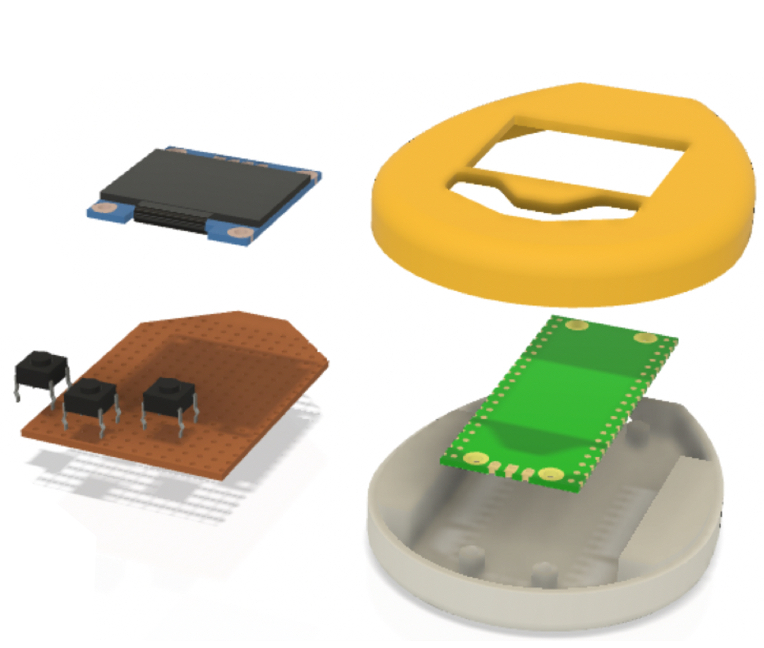Raspberry Pi Pico Tamagotchi is The Perfect Virtual Pal

Whether or not you grew up in the 90s, you’re bound to recognize the popular pocket-sized virtual pet platform Tamagotchi. These battery-powered devices put a digital creature at the mercy of your care, expecting you to play with it, feed it and clean up after it. You can still find Tamagotchis on the market today and their Digimon counterparts. However, robotics fanatic Kevin McAleer has gone one step further and made his own from scratch using our favorite microcontroller, the Raspberry Pi Pico. His custom creation has been officially dubbed the Picotamachibi.
According to Kevin, the name is derived from a few words. Pico comes from the Raspberry Pi Pico controlling the operation. ‘Tama’ is taken from Tamagotchi, while ‘chibi’ is taken from the Japanese term ‘chibi kyara’ (ちびキャラ) or ‘tiny character.’ Kevin explains that this custom Pico pet was programmed using MicroPython.
The device is very similar in design to an original Tamagotchi. It has an OLED display with graphics depicting a tiny virtual creature. A menu bar has various icons that you can use to interact with and care for your virtual pet. The sprites aren’t static either; you can expect subtle movements and animations while in use.



Kevin designed the housing for the Picotamachibi from scratch and 3D printed it. You can use either a Raspberry Pi Pico or a Raspberry Pi Pico W for the project, as wireless connectivity isn’t a necessary component. He’s using three tact switches for the input buttons and an SSD1306 OLED display which has a resolution of 128 x 64px.
The three buttons are A, B, and X. The A button is used for rotating through the menu options in the top bar. The B button selects an item while the X button cancels it. A little skull icon will appear when your virtual pet’s health is compromised. Kevin has a video breaking down the code used in this project on his official YouTube channel.
If you want to recreate this Raspberry Pi project and make your virtual pet, check out the full blog post on his website. Be sure to follow Kevin for future updates and more cool robotic creations.
Get Tom's Hardware's best news and in-depth reviews, straight to your inbox.

Ash Hill is a contributing writer for Tom's Hardware with a wealth of experience in the hobby electronics, 3D printing and PCs. She manages the Pi projects of the month and much of our daily Raspberry Pi reporting while also finding the best coupons and deals on all tech.